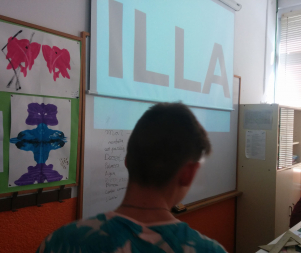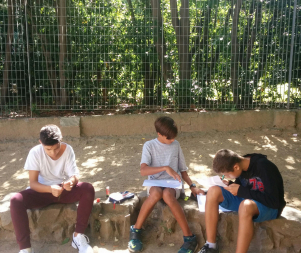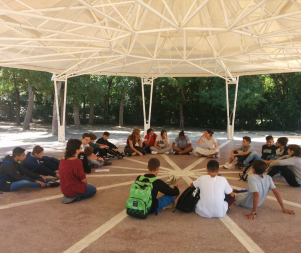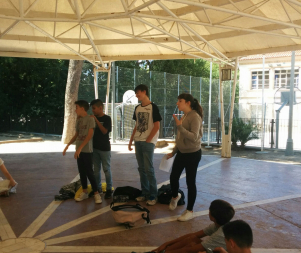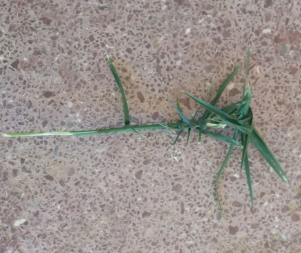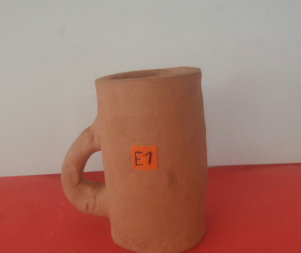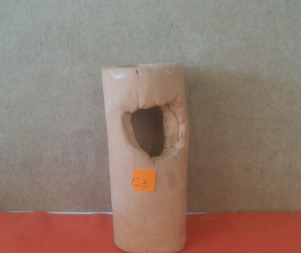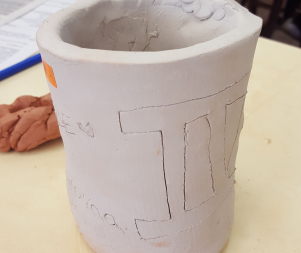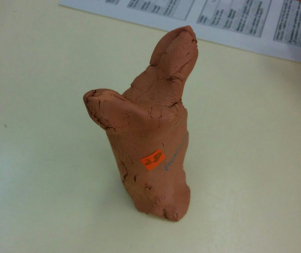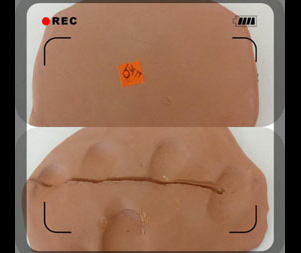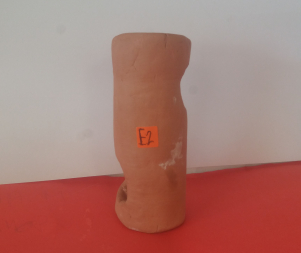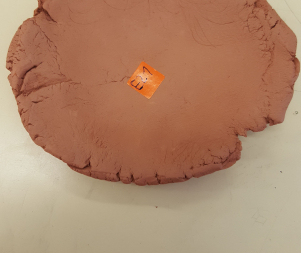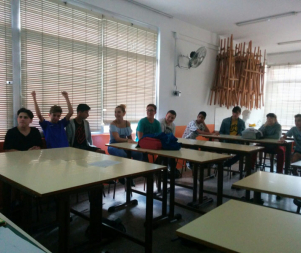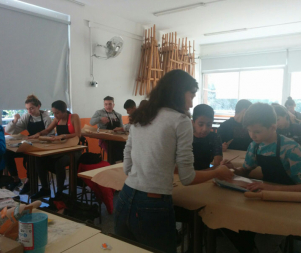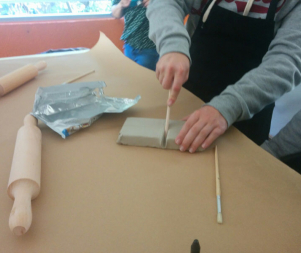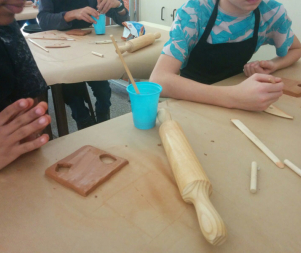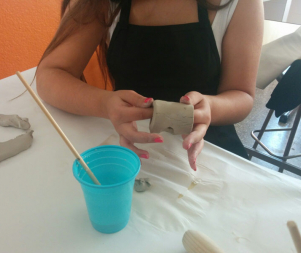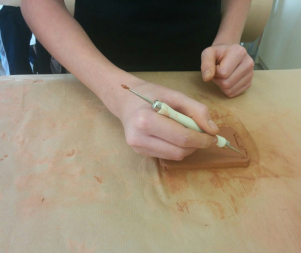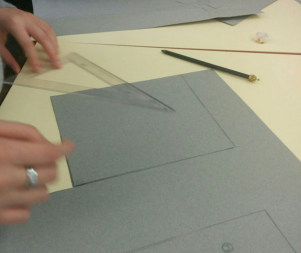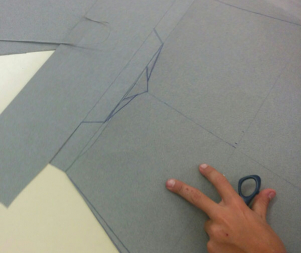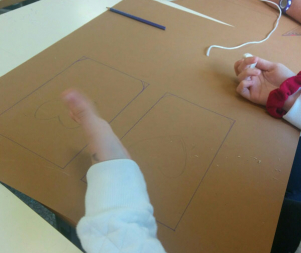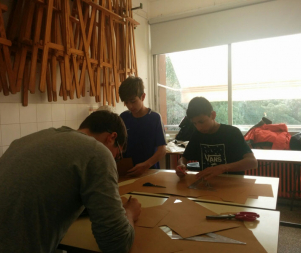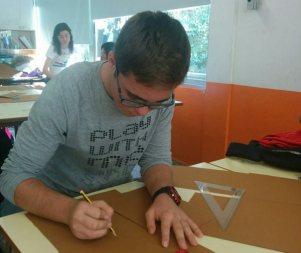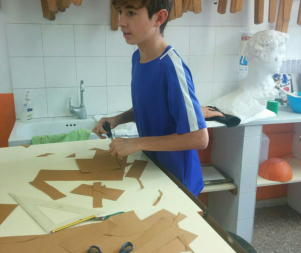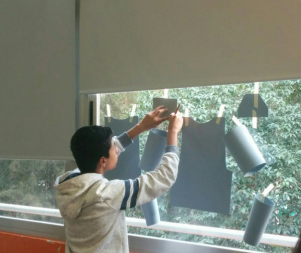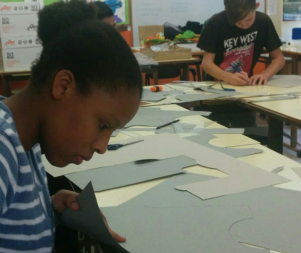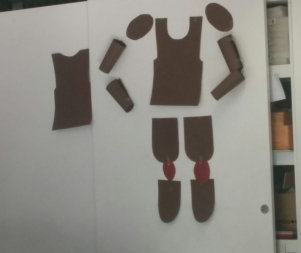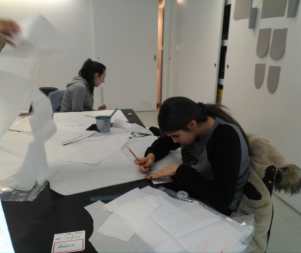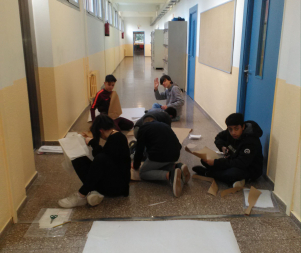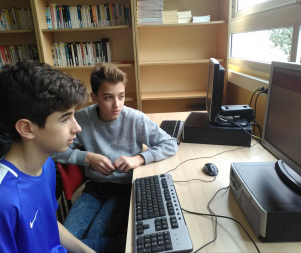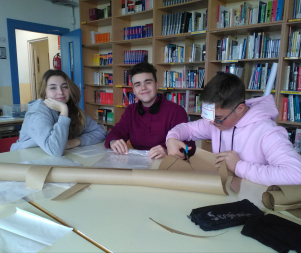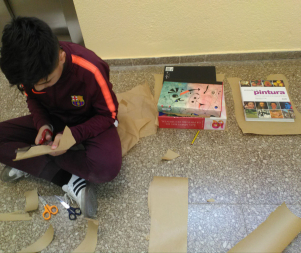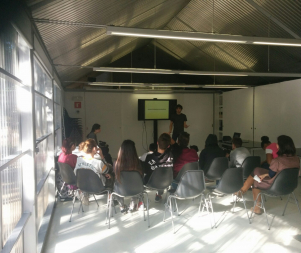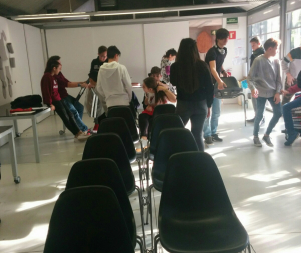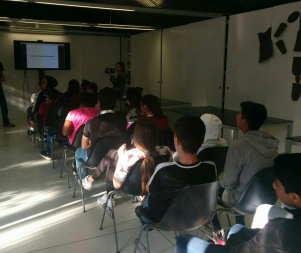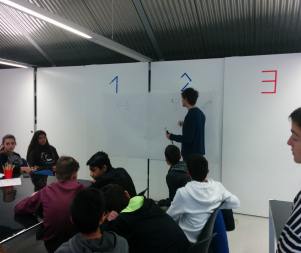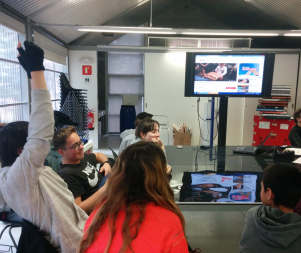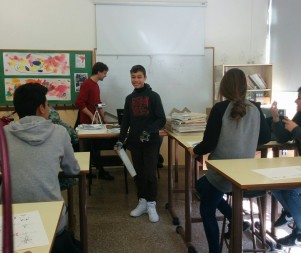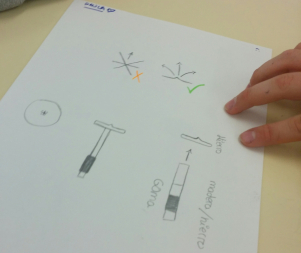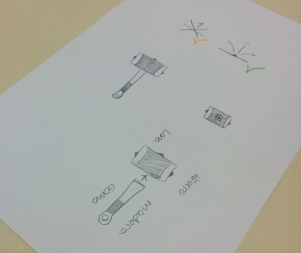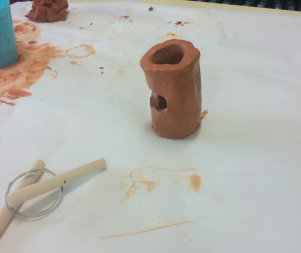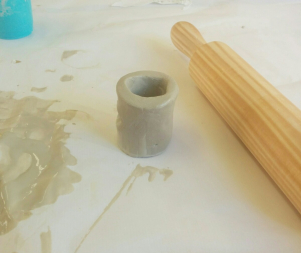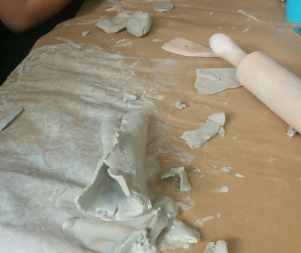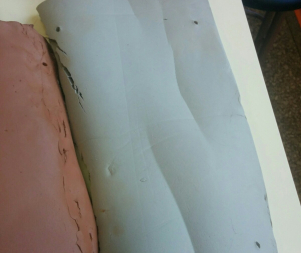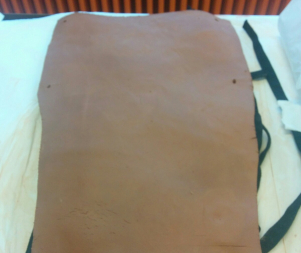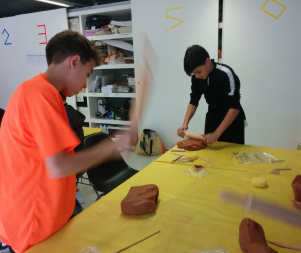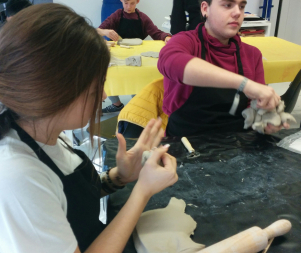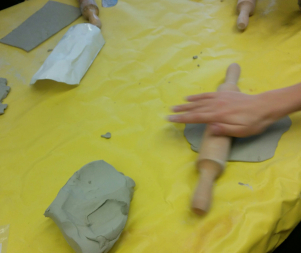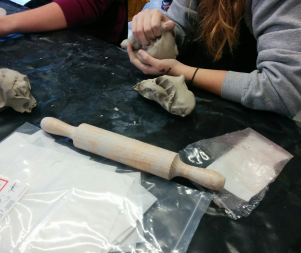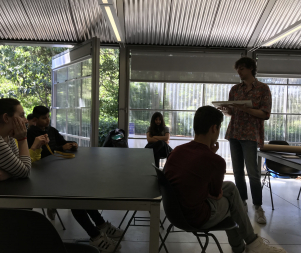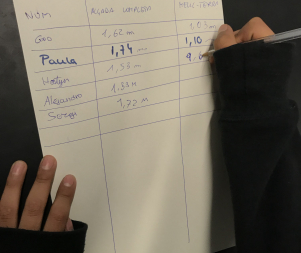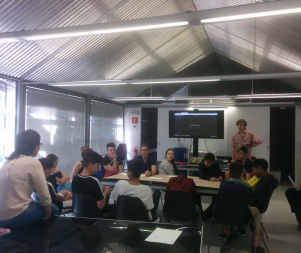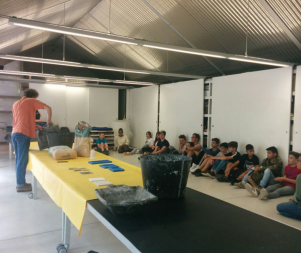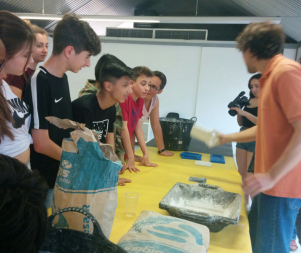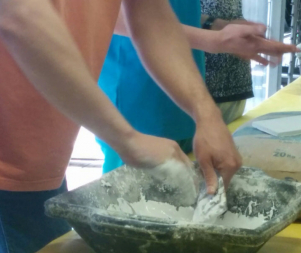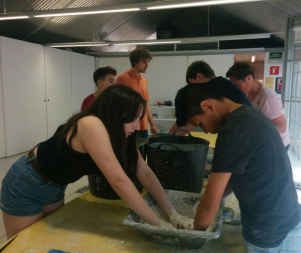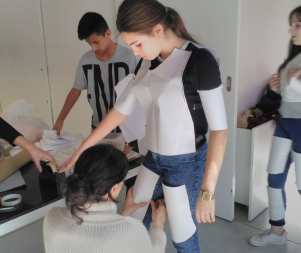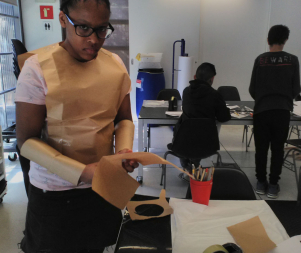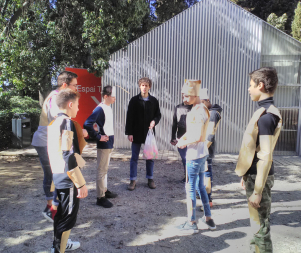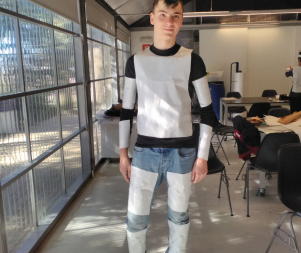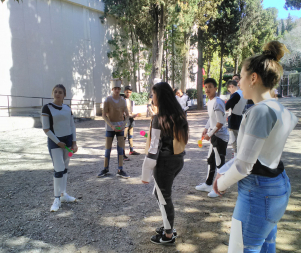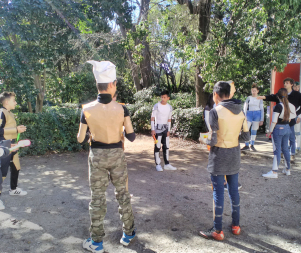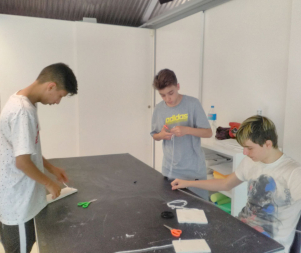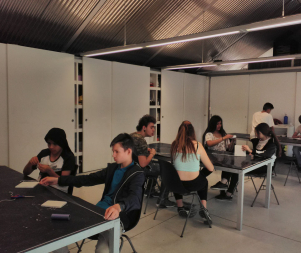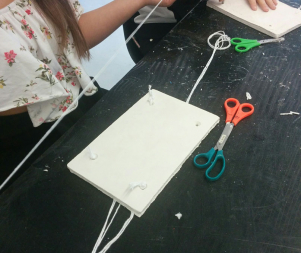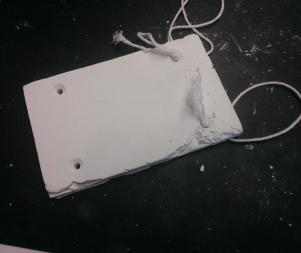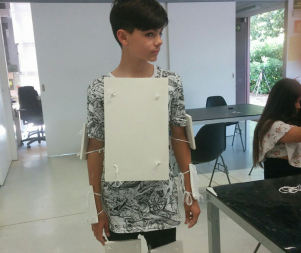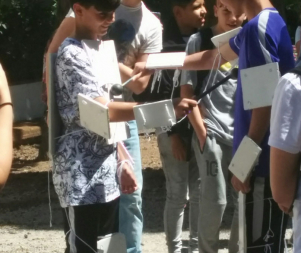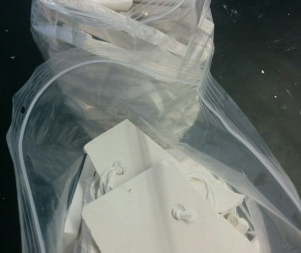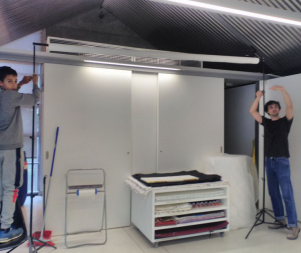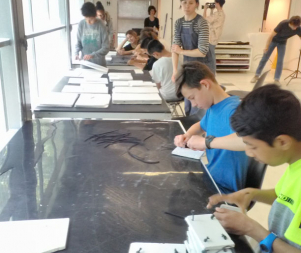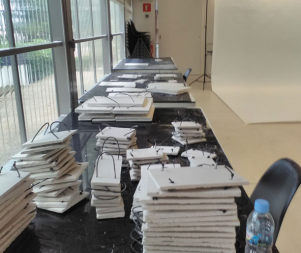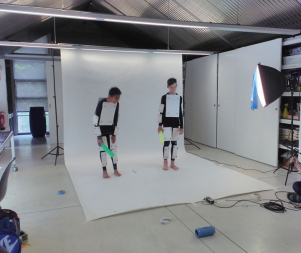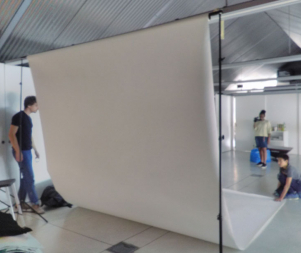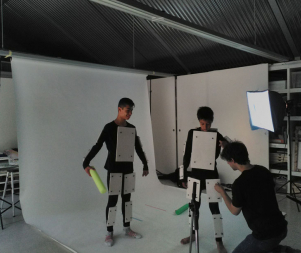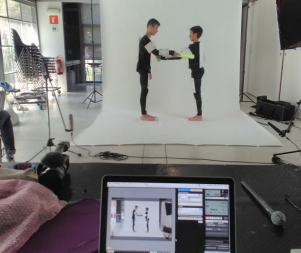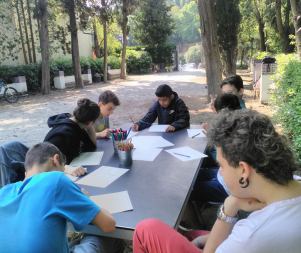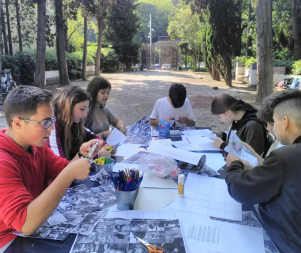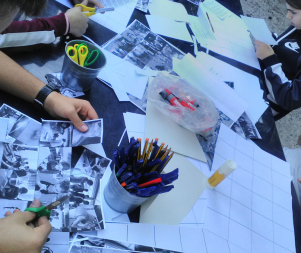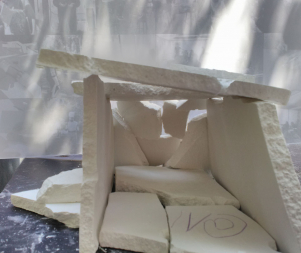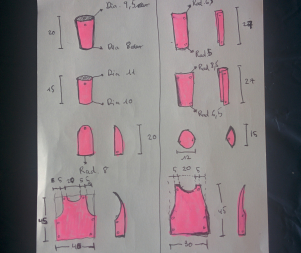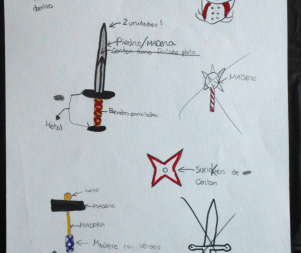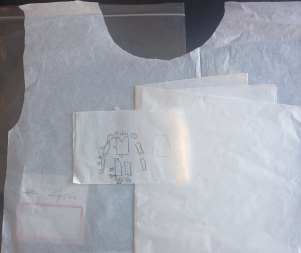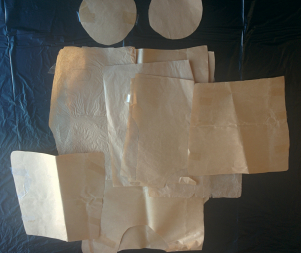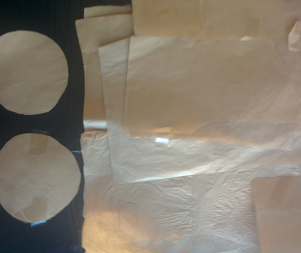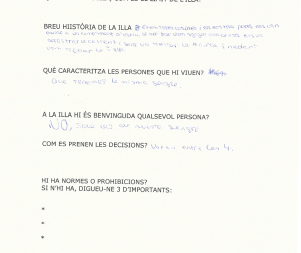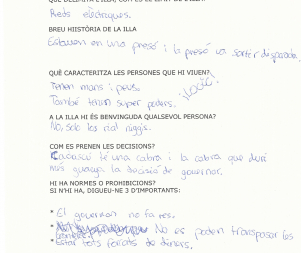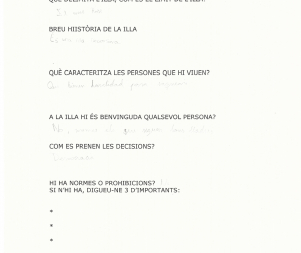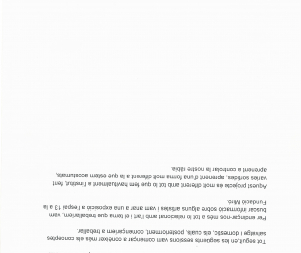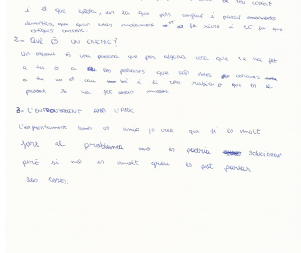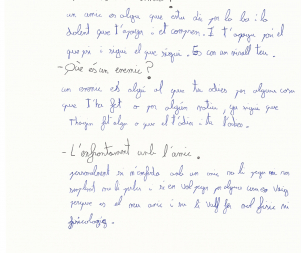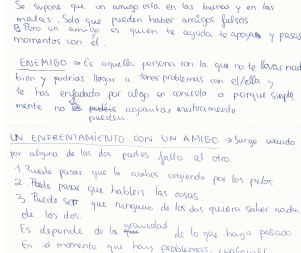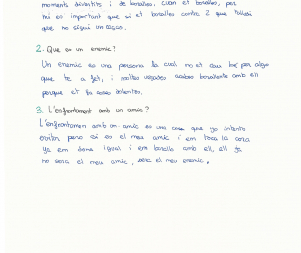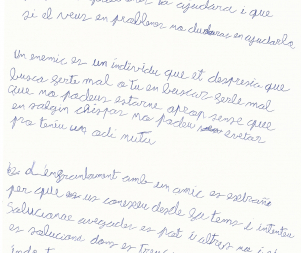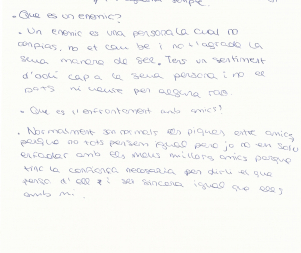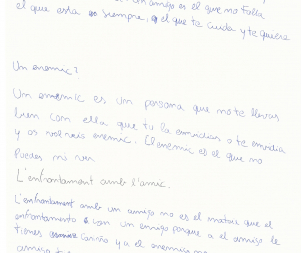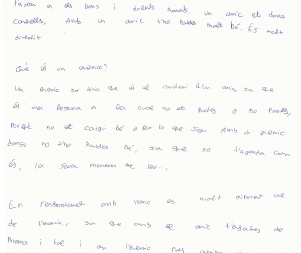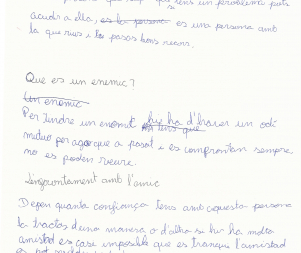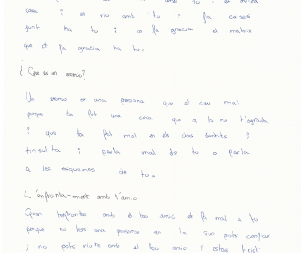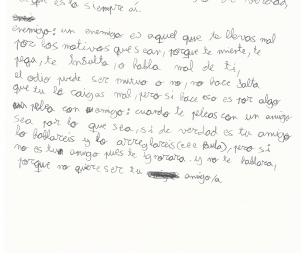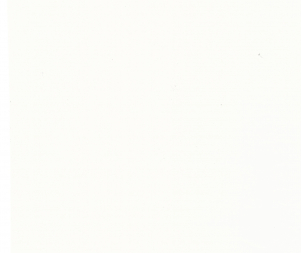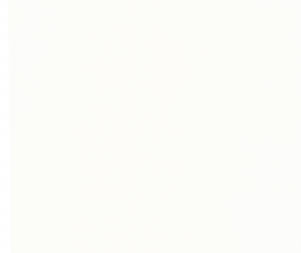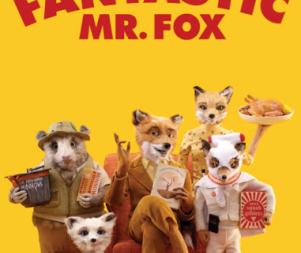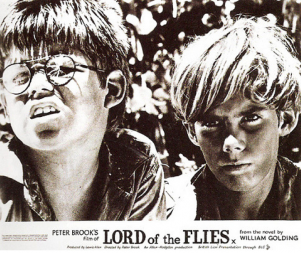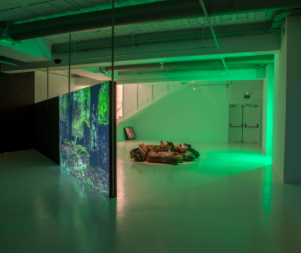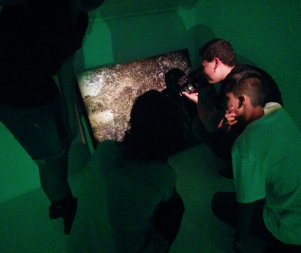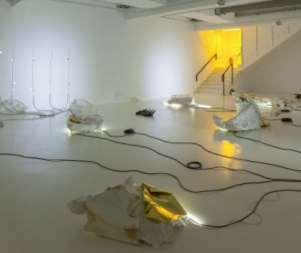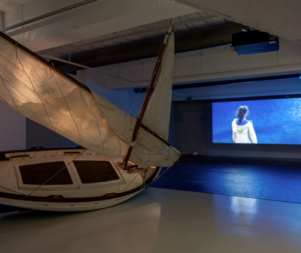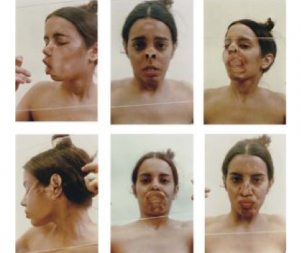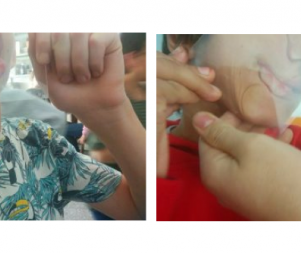- 14th EDITION 2022 / 2023
- 13th EDITION 2021 / 2022
- 12th EDITION 2020 / 2021
- 11th EDITION 2019 / 2020
- 10th EDITION 2018 / 2019
- 9th EDITION 2017 / 2018
- 8th EDITION 2016 / 2017
- 7th EDITION 2015 / 2016
- 6th EDITION 2014 / 2015
- 5th EDITION 2013 / 2014
- 4th EDITION 2012 / 2013
- 3rd EDITION 2011 / 2012
- 2nd EDITION 2010 / 2011
- 1st EDITION 2009 / 2010
Cristian Herrera IN RESiDENCE at the School Institut Bosc de Montjuïc
WORK PROCESS AND PROJECT DEVELOPMENT
The sessions that we organised during the first phase of the project, corresponding perhaps to the first three months of IN RESIDENCE, helped all the participants (pupils, the artist, mediators, teachers) to gradually get to know each other and also allowed us to begin to explore conceptual and formal possibilities regarding the artistic project that we would later develop. These sessions also served to contextualise the IN RESIDENCE project within the curatorial proposal of Espai 13, while Cristian Herrera introduced pupils and teachers to his artistic practice and work processes.
Through a series of exercises and presentations, the group explored the imaginary linked to islands, later making more in-depth study to identify two concepts culturally related to the imaginary of this geographical space: the wild/domestic dichotomy. These concepts encouraged thought and an interesting debate on how we can channel our instincts in an acceptable way, and on how regulated combats, certain games and competitive sports have often served to provide an outlet for the spirit of competitiveness and confrontation found in human nature. The group also worked on the idea of the enemy, and confrontation or rivalry with friends. The concept of “agonism” gradually took form as a key idea behind the artistic project that would finally be produced.
As regards the formal work, Cristian explained that many of his works often had a performative, action component, and that, in the exhibition space, these usually took the form of video installations. He suggested that the art work carried as part of the IN RESIDENCE programme should also take this approach. The piece would be an action that would be recorded and would eventually take the shape of a video, perhaps accompanied by some other element or material to create a video installation.
Having identified the key idea around which the project would be articulated and the format it would have, we began a second stage, one also marked by a change of location, since from January we conducted almost all the sessions at the Workshop Space (Espai Taller) at the Miró Foundation. This second stage in the project was focused more on the material production of the elements that we would need to complete the artistic project, mainly the armour that the pupils would wear. The artist's initial idea was to make this armour from clay, and to that end we devoted several sessions to making creating paper and Manila paper moulds, which each pupil would use to make their own pieces, while also learning to model clay with the guidance of Mar Blanco. Cristian and the pupils designed and produced prototypes from the clay, but gradually realised that these were not strong enough, and became cracked and broken before they could be used. This was useful learning for the pupils, since they became aware that art work often involves a process of trial and error, formal experimentation with materials to test how they react and behave, and that it is part of the artist’s work to seek alternatives when one first tried does not produce satisfactory results.
A new process of producing the pieces then began, this time using plaster and moulds that Cristian made in cooperation with fellow artist Marc Badia. Parallel to this process of making the armour, the pupils took some fitness tests or course navette to familiarise themselves with the audio track that they would use in the performance, and they also worked together to compose the rules and regulations governing the combat.
All these work processes – which we now describe in a broad, general way – were accompanied by exercises, discussions, viewings and special activities. At certain points, the work process enabled the group to work on some concepts in other classes, outside the hours devoted to IN RESIDENCE. An example was the series of calculations made in the mathematics class, which served to design the protective armour pieces, another the presentation that one of the students and the teacher, Rafa Rodríguez, gave on the golden ratio, on which the design of these pieces was based, also in the maths class. Throughout this second project stage, which culminated with the final presentation, the pupils themselves recorded the work sessions on video camera, which allowed them to familiarise themselves with the use of this technical equipment and also to take decisions as to what should be documented and how this should be done.
1. The possibility of an island
2. First free pieces with mud. How a work of art is cataloged
3. First plates of the armor in mud
4. Elaboration of patterns to make pieces in clay
5. We work on concepts about agonism. Who is our best friend
6. Design parts to break the armor
7. Final mud pieces
8. We learn from error. We make the pieces with silicone molds and plaster
9. We remake the patterns for the new shell models and train
10 Testing pieces of chalk
11 We record
12. Hand program design
WORKS FROM STUDENTS
Calculate the radius and other measures of the armor pieces
We design a tool to fight and not harm the enemy
Patterns
What is a friend
SELECTION OF VIEWINGS, READINGS AND ACTIVITIES
Some of the viewings seen during the work process in the classroom:
- Fantastic Mr. Fox, Wes Anderson, 2010
Animated film based on the book by Roald Dahl
- Milgram experiment, on obedience and authority.
https://www.youtube.com/watch?v=8rocRcUOwFw&feature=youtu.be
- Stanford Prison experiment, on the adoption of roles assigned to individuals and groups
https://www.youtube.com/watch?v=Uo0bN28rfRA
- Donald Duck and the Golden Ratio
https://www.youtube.com/watch?v=7h8dNH9Xnfg
- Lord of the Flies, Peter Brook, 1963
Film adaptation of William Golding’s novel.
- Videos on the process of making the moulds used to make the plaster pieces
READINGS
Proposed by Núria Llopis to work on the idea of the friend/enemy, the pupils read and discussed the Catalan translation of Kathrine Kressmann Taylor’s 1938 novel Address Unknown. They also did some exercises based on Gianni Rodari’s book The Grammar of Fantasy.
EXHIBITIONS
During the project period, visits were organised to the nearby Miró Foundation, where IN RESIDENCE has links with the Espai 13 exhibition season. The group visited the following shows from this season:
- Reserva, Gerard Ortín
- Non-Slave Tenderness, Lucía C. Pino
- L’Odissea, Bárbara Sánchez Barroso
- Although not part of the Espai 13 season, the pupils also visited the exhibition Beehave.
SPECIAL ACTIVITIES
Àngel Garau, from Experimentem amb l’Art, led a workshop entitled “You can be a sculpture” with the aim of broadening our conception of what we understand by sculpture. The workshop encouraged the pupils to think about their own bodies as sculptural material through references to the work of such artists as Ana Mendieta, Doris Salcedo, Erwin Wurm and Gabriel Orozco, and through practical exercises.
BLOG
Throughout the IN RESIDENCE process, the pupils and the teacher, Núria Llopis, wrote a blog devoted to the project, available at the following link: http://blocsenresidencia.bcn.cat/boscdemontjuic1718/

